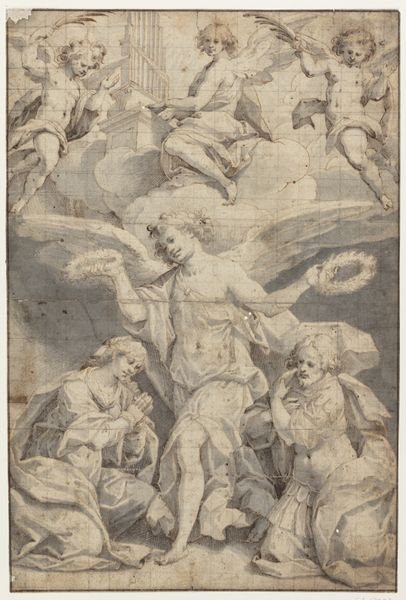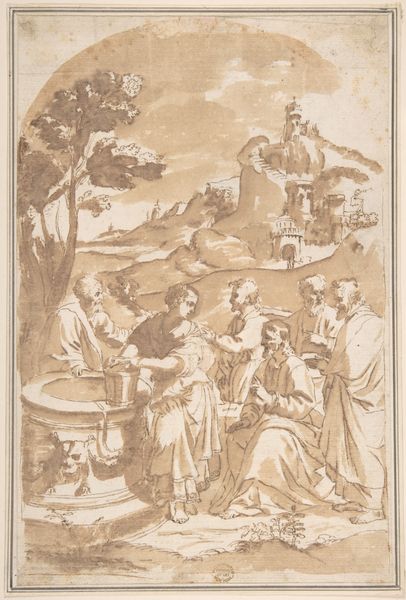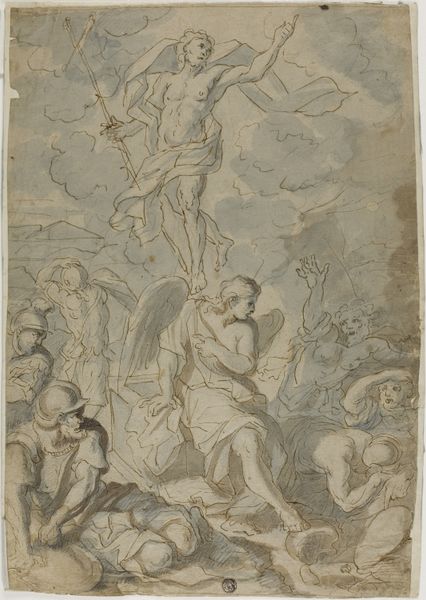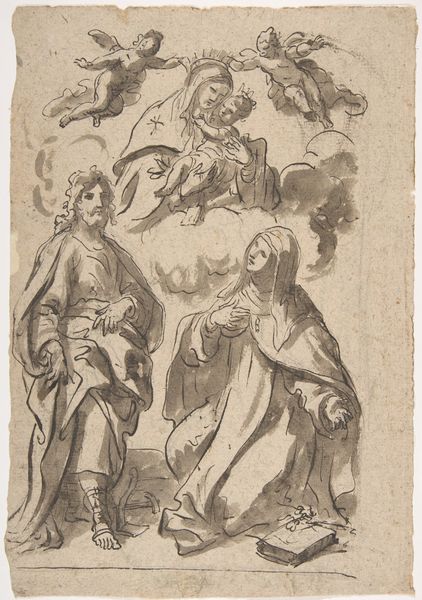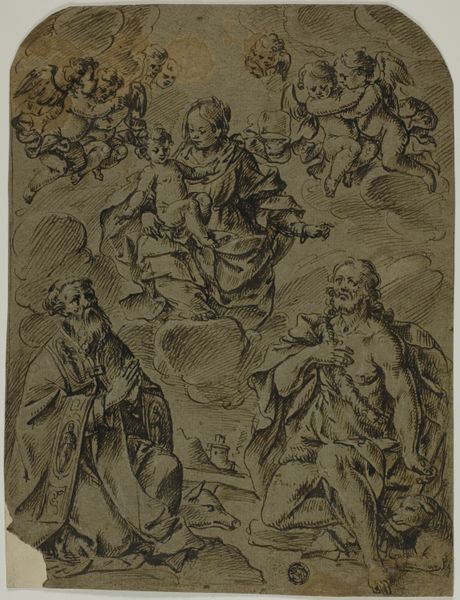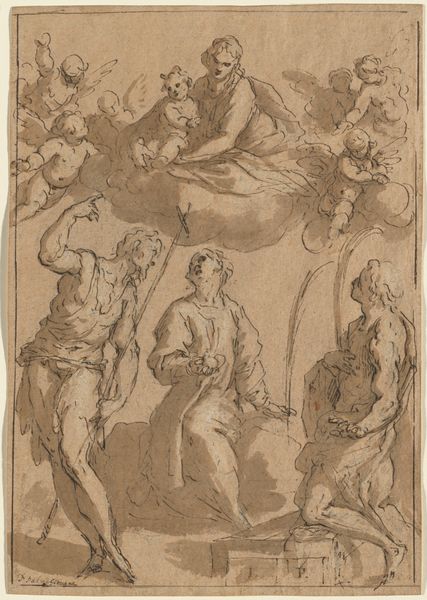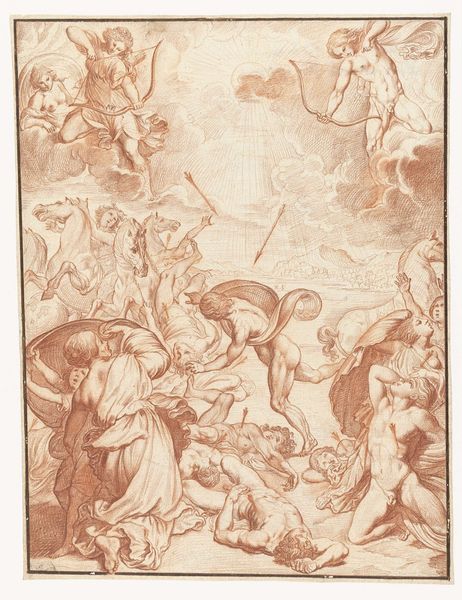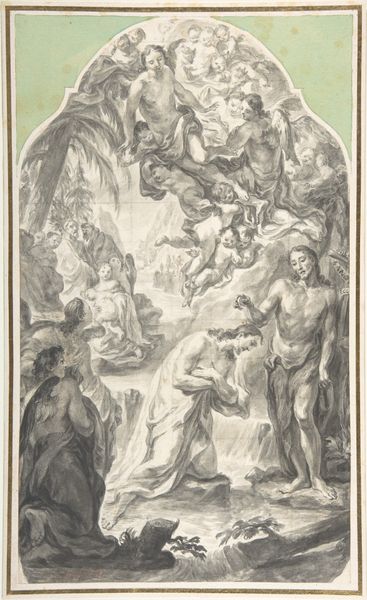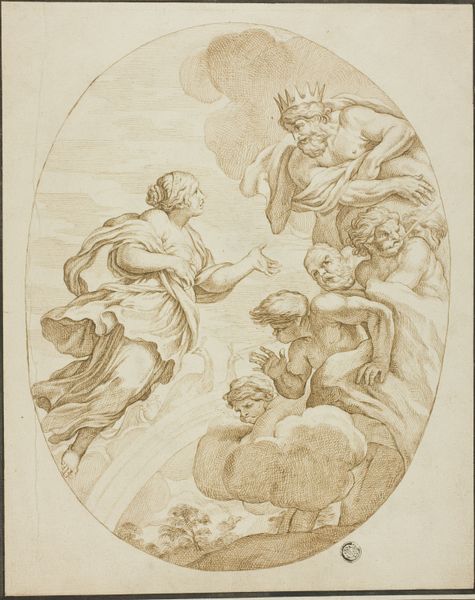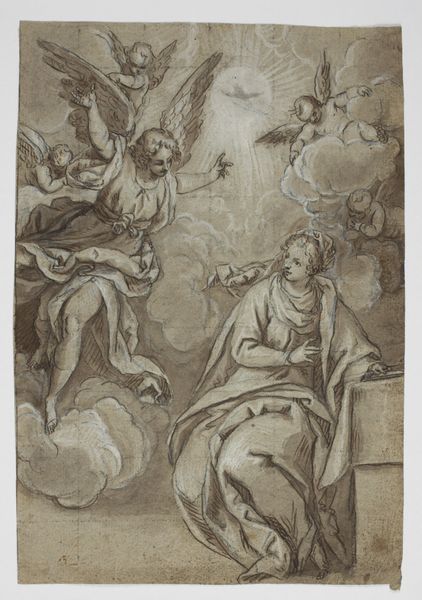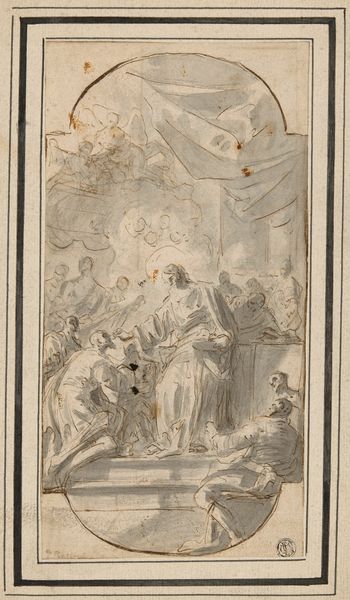
drawing, ink, pen
#
drawing
#
baroque
#
ink painting
#
figuration
#
ink
#
pen
#
history-painting
#
academic-art
#
watercolor
Dimensions: 10 3/4 x 5 15/16 in. (27.31 x 15.08 cm) (sheet, irregular)18 3/4 x 12 3/4 in. (47.63 x 32.39 cm) (outer frame)
Copyright: Public Domain
Curator: I'm struck immediately by the ethereal quality of this work; it feels almost dreamlike, rendered in soft washes and delicate lines. Editor: Indeed. What you're perceiving is Jacques Stella’s "The Baptism of Christ," likely dating back to the 17th century. Executed with pen and ink, the scene unfolds with an understated, academic grace. Curator: It's a fascinating scene, wouldn't you agree? John the Baptist is shown poised to baptize Jesus. What fascinates me is the placement of the dove overhead. A symbolic embodiment of the Holy Spirit watching over this holy sacrament, full of spiritual significance! Editor: The composition reflects a classic Baroque sensibility, doesn't it? Notice how the figures—the angels above, the congregation to the left—are arranged to guide the viewer's eye towards the central action. Curator: The image vibrates with allegorical depth, each component is steeped in the cultural memory. Take, for example, the onlookers; we can see that many different human reactions are being displayed. A rich moment for reflection and acceptance for all different people in their relationship to faith. Editor: I find the stark contrast between the heavenly and earthly realms interesting. While John and Jesus are rendered with distinct, almost classical lines, the divine entities above seem softer, less defined. I would ask, how do such distinctions contribute to how this drawing operated culturally at the time? Was the human/holy divide just as present? Curator: It absolutely encourages that consideration! However, looking beyond the history of artistic representation, the drawing suggests that through rituals such as Baptism, humanity may overcome earthly suffering to join the sublime and everlasting divine. Editor: I see what you mean! Considering this image within its historical context illuminates how such visual presentations fostered, even shaped, the perception of holiness and belonging within the Baroque era, shaping religious identity through orchestrated imagery. Curator: Ultimately, through symbolism and historical context, the baptism of Christ appears in both spiritual contemplation and in human recognition to forge new insights, even today!
Comments
minneapolisinstituteofart almost 2 years ago
⋮
Lyonais painter Jacques Stella enjoyed one of the most spectacular artistic careers of the 17th century. For extended periods he served Cosimo II de Medici in Florence, Pope Urban VIII in Rome, and Louis XIII and Cardinal Richelieu in Paris. He became one of the leading exponents of classicism in France. The present drawing of the baptism of Christ appears to be an early study for a major altarpiece completed in 1645 (Saint-Louis-en-l’Île, Paris). The Louvre owns a closely related drawing of the composition in a more advanced stage. Many elements of our drawing were carried over to the finished painting, but ultimately the artist chose to present Christ as standing rather than kneeling.
Join the conversation
Join millions of artists and users on Artera today and experience the ultimate creative platform.
